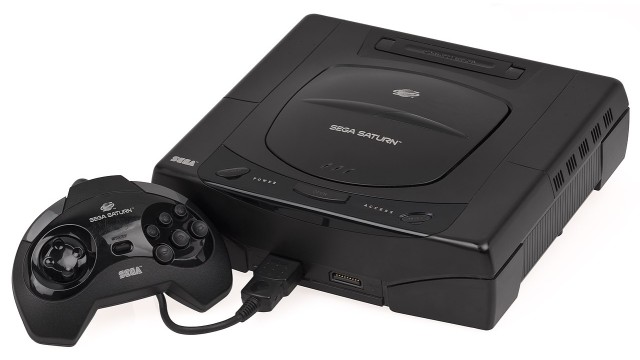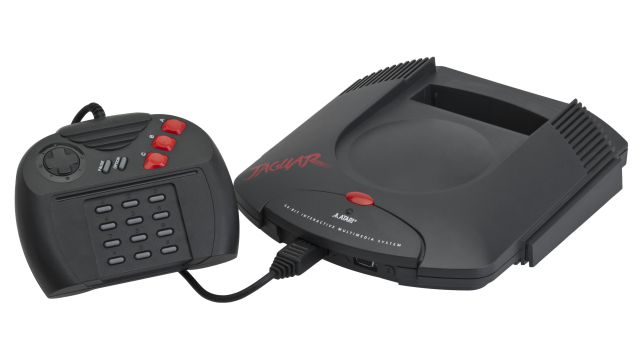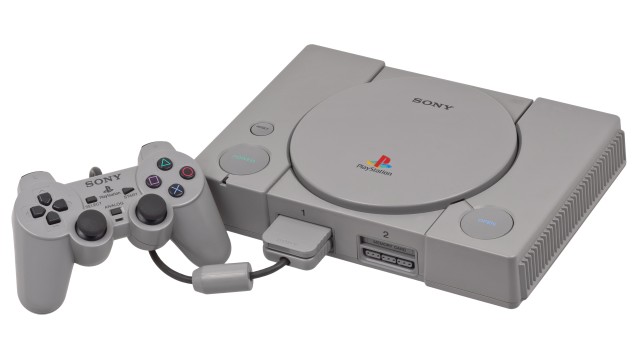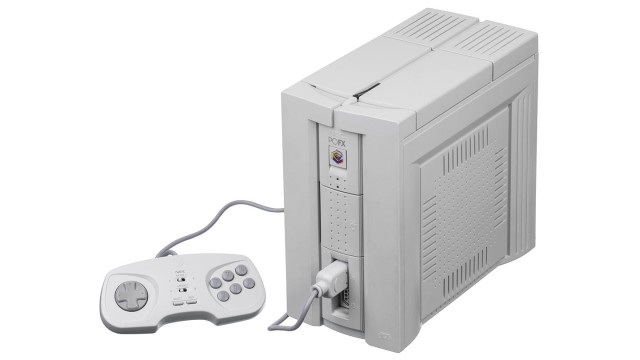
Sega Saturn
Launches: 1994
Discontinued: 2000
Life span: 6 years
Units sold: 9 500 000
Generation: 5th
Country releases of Sega Saturn
 Japan: Japan: | 22/Nov/1994 | 44800 | ¥ |
 USA: USA: | 11/May/1995 | 399 | $ |
 Spain: Spain: | 07/Jul/1995 | 80000 | ₧ |
 United Kingdom: United Kingdom: | 08/Jul/1995 | 400 | £ |
 Sega Saturn technical specifications
Sega Saturn technical specifications
CPU: SH-2
Memory: 2 MB
 Sega Saturn video specifications
Sega Saturn video specifications
Sega Saturn graphics capabilities.
Video chip: VDP1 & VDP2
Video connection:
Sega Saturn video modes
| 704×224 | 16777216 colors |
 Sega Saturn audio specifications
Sega Saturn audio specifications
Sega Saturn sound capabilities.
Audio chip: Yamaha YMF292
Audio mode: Stereo
 Controllers of Sega Saturn
Controllers of Sega Saturn
 Sega Saturn games support
Sega Saturn games support
Support: Cartridge
Sega Saturn games
Games library:
Sega Saturn story
The Sega Saturn represents a fascinating chapter in the history of video game consoles, characterized by ambitious technological aspirations, strategic missteps, and a highly competitive marketplace. The story of the Sega Saturn begins in the early 1990s, a time when Sega was riding high on the success of the Sega Genesis (known as the Mega Drive outside of North America). The Genesis had firmly established Sega as a major player in the video game industry, competing directly with Nintendo. As the company looked to the future, they recognized the need to develop a successor that could continue this momentum into the next generation of gaming.
The creation of the Sega Saturn was initially driven by the rapid advancements in video game technology, particularly in the realm of 3D graphics. During this period, the industry was transitioning from 2D sprite-based graphics to 3D polygonal models, a shift that promised to revolutionize the gaming experience. Sega, eager to stay at the forefront of this technological wave, began work on a new console that could deliver cutting-edge 3D performance. However, the development of the Saturn was not straightforward, and it became embroiled in a complex web of technical and strategic decisions that would ultimately shape the console's fate.
The development of the Sega Saturn was spearheaded by Hideki Sato, Sega’s hardware guru, and a team of engineers who initially focused on creating a system that excelled at 2D graphics while also being capable of 3D rendering. This decision was rooted in Sega’s strong presence in the arcade market, where their arcade machines were known for their powerful 2D capabilities. The Saturn was envisioned as a console that could faithfully replicate the arcade experience at home, with an emphasis on high-quality 2D graphics.
However, as the Saturn’s development progressed, it became clear that the industry was rapidly moving towards 3D gaming. The emergence of Sony’s PlayStation, which was being designed from the ground up to handle 3D graphics efficiently, posed a significant challenge to Sega’s plans. In response, Sega made a crucial decision to augment the Saturn’s architecture with additional processors to enhance its 3D capabilities. The final design of the Saturn included a dual-CPU setup, consisting of two Hitachi SH-2 processors, along with a total of eight processors dedicated to various tasks, including graphics, sound, and memory management.
This complex architecture was both a blessing and a curse. On the one hand, it gave the Saturn considerable raw power, particularly in handling 2D games and offering some impressive 3D capabilities. On the other hand, the architecture was notoriously difficult to program for. The dual-CPU design required developers to carefully manage parallel processing, which was a challenging task given the limitations of the development tools available at the time. This complexity resulted in longer development times and made it difficult for third-party developers to fully harness the Saturn’s potential, particularly in comparison to the more straightforward and developer-friendly PlayStation.
The launch of the Sega Saturn was a dramatic and controversial event that had a lasting impact on the console’s market reception. Originally, Sega had planned to launch the Saturn in North America in September 1995, a date that would have allowed them to build up anticipation and ensure a solid lineup of launch titles. However, in a surprising move, Sega announced at the first-ever Electronic Entertainment Expo (E3) in May 1995 that the Saturn would be available immediately, four months ahead of schedule. This decision was driven by a desire to gain an advantage over Sony’s PlayStation, which was set to launch later that year.
While the early launch allowed Sega to be the first next-generation console on the market, it also created significant problems. Retailers were caught off guard by the sudden release, leading to confusion and frustration. Major retailers like Walmart and KB Toys were excluded from the initial launch, which hurt the Saturn’s distribution and retail presence. Additionally, the rushed launch meant that only a few games were available at release, and many developers were unprepared, leading to a dearth of quality titles during the critical early months.
Market reception to the Sega Saturn was mixed, with the console facing an uphill battle in both Japan and North America. In Japan, where the Saturn launched in November 1994, the initial reception was positive, bolstered by the release of Virtua Fighter, a highly anticipated title that showcased the Saturn’s 3D capabilities. Virtua Fighter became a system-seller in Japan, and the Saturn enjoyed strong sales during its early months. However, in North America and Europe, the early launch strategy backfired. Consumers were confused by the sudden availability of the Saturn, and the limited selection of games did little to persuade early adopters. The high price of the console, set at $399, also made it less attractive compared to the PlayStation, which launched at $299.
As the market competition intensified, the Saturn struggled to maintain its footing. Sony’s PlayStation quickly gained momentum due to its lower price, more extensive library of games, and greater support from third-party developers. The Saturn’s complex architecture and the difficulties developers faced in creating games for it led to a smaller, less diverse game library compared to the PlayStation, which offered a wide range of genres and iconic titles that appealed to a broader audience. Furthermore, Sega’s decision to prioritize 2D capabilities, while admirable from a technical standpoint, proved to be a miscalculation in an era where 3D gaming was becoming the dominant trend.
Despite these challenges, the Sega Saturn did find success with a dedicated base of fans, particularly in Japan, where certain genres, such as fighting games and shoot ‘em ups, thrived on the platform. The Saturn also boasted several critically acclaimed titles, including Panzer Dragoon, Nights into Dreams, and the aforementioned Virtua Fighter series, which showcased the system’s strengths and provided memorable gaming experiences. However, these successes were not enough to reverse the console’s fortunes on a global scale.
By the late 1990s, the Saturn’s position in the market had significantly weakened. Sega’s internal struggles, including financial difficulties and management turmoil, compounded the problems facing the Saturn. The company eventually shifted its focus to developing its next console, the Sega Dreamcast, in an effort to regain its former glory. The Saturn was quietly discontinued in North America and Europe by 1998, while its lifespan in Japan lingered on a bit longer, albeit with a declining presence.
The Sega Saturn’s legacy is one of both ambition and cautionary lessons. It represented a bold attempt by Sega to push the boundaries of gaming technology, but it was ultimately hindered by a series of strategic errors, a challenging development environment, and stiff competition from rivals like Sony and Nintendo. While the Saturn did not achieve the commercial success Sega had hoped for, it remains an important part of the company’s history and a console that continues to be appreciated by collectors and enthusiasts for its unique place in the evolution of video games.
Previous Sega console: Mega Drive
Next Sega console: DreamCast



